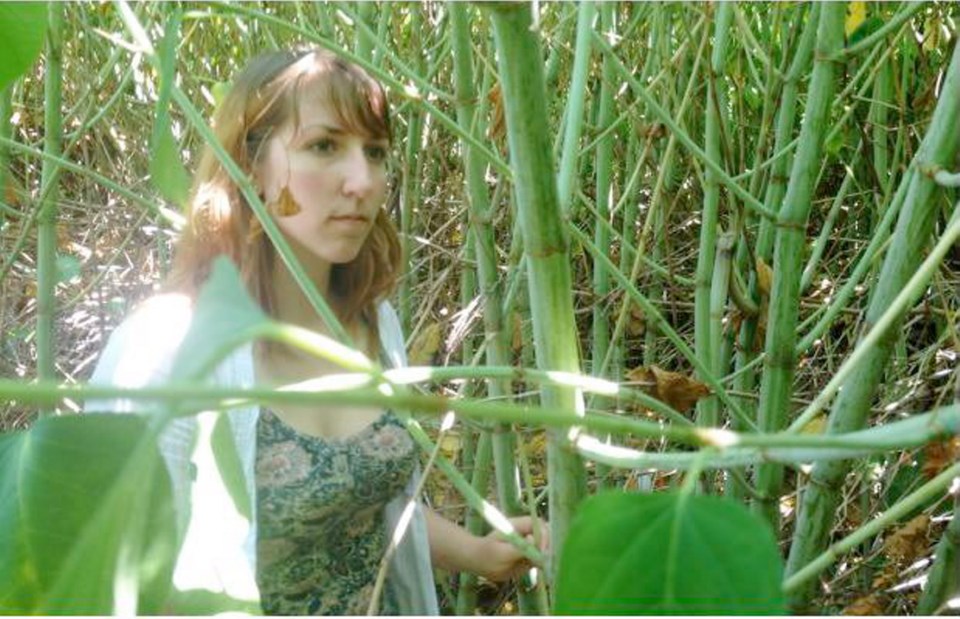An ever-shifting plague of foreign weeds is invading Metro Vancouver’s roadsides, parks and gardens through the earth and the air.
Japanese knotweed, an aggressive Asian plant first spotted in B.C. in the 1990s, has combined with giant knotweed to create a hybrid called Bohemian knotweed.
Now that hybrid is “back-crossing” with its parents to make new breeds that spread faster and are even harder to kill, according to Jennifer Grenz, executive director of the Invasive Species Council of Metro Vancouver.
“It’s breeding with its parents, it’s kind of incestuous,” said Grenz, who is studying the new knotweeds for her master’s thesis at the University of B.C.’s Faculty of Land and Food Systems.
Japanese knotweed has been a serious problem in Britain since it was introduced there more than 100 years ago, planted by gardeners who found the bamboo-like plant pretty and very easy to grow.
“You can ignore it and it does well,” Grenz said.
Too well, as it turns out. The shoots can punch through road asphalt, break building foundations in extreme cases, and overrun local plants. A thicket of knotweed can grow to well over three metres tall during a single growing season.
The Invasive Species Council of Metro Vancouver has been leading B.C.’s fight against Japanese knotweed for the past five years. The original plant spread through its deep and durable root systems, which can keep growing from tiny fragments.
Like tip of an iceberg
Fighting knotweed means injecting the plants with the herbicide glyphosate, sold under the name Roundup.
“The plants are like an iceberg: What you see is only a very small portion of what’s going on,” Grenz said.
“You need a chemical that’s going to move all the way through the plant and get down to the roots. If you leave any bit of root fragment at all, you’re going to have a new plant.”
It’s even harder to fight the new breed, which produces viable seeds that can be spread by birds, animals or wind.
“It’s a real game-changer in terms of urgency,” Grenz said. “Plants are showing up in the middle of nowhere. We can’t even figure out how they would have gotten here.
“People started talking about this sleeping knotweed phenomenon. They do treatments and then, three years later, a plant comes up. It made us doubt whether our treatments were effective or not.”
The council works with dozens of Lower Mainland jurisdictions — cities, provincial government ministries, Crown corporations and First Nations — to control the spread of knotweed on public lands.
The new types are moving via seed, said Grenz, who is collecting samples from throughout B.C.
Could be ‘chasing our tails'
“It could mean — and I think it means — that we need to jump on this a lot more aggressively and a lot faster than we thought, or we’re going to be chasing our tails,” she said.
Joanna Hirner, conservation specialist at the South Coast region of B.C. Parks, handles the knotweed battle for an area that includes the Sunshine Coast, the Sea to Sky corridor, Metro Vancouver and the Fraser Valley. They’ve been on guard for and treating knotweed outbreaks, mostly near trails or roads, since the 1990s.
There was the puzzling outbreak a few years ago at the north end of Indian Arm, in what is now called SayNuthKhawYum Park, a boat-access-only park and camping area.
“We’re not entirely sure how it got there,” Hirner said. “Maybe someone had it on their boat.”
B.C. Parks employees are all trained to spot knotweed outbreaks, said Hirner, so that has helped them deal with infestations early. But they have to remain vigilant.
“It’s going to require a long-term commitment, going back and monitoring the sites that we’ve treated in the past,” she said.
Stanley Park not immune
The plants have even made inroads into Vancouver’s leafy crown jewel, Stanley Park, said Vancouver park operations manager Brian Quinn. Contractors were hired to do chemical injection treatments in May after computer mapping showed various outbreaks in the park.
“From an environmental standpoint, injecting is the safest way to try and control it,” Quinn said. “We’re not spraying all over. It’s low impact, very little chance of human contact.”
He doesn’t know how it got into the park, but he said the plant can spread from private properties whose owners don’t know any better.
“If you look around Vancouver, knotweed is everywhere,” said Quinn. “People don’t control it and that just adds to the seed bank.”
Cliff Hoegler of Surrey-based B.C. Plant Health Care does contract work for governments and landowners throughout the Lower Mainland, ridding properties of knotweed. He said homeowners are the last to get the message that the weed is destructive.
‘They're probably watering it'
“They don’t know. They’re probably watering it, thinking it’s a beautiful plant,” he said.
Hoegler hasn’t yet seen the kind of damage reported in the U.K., where knotweed has damaged roads and buildings.
“We’ve caught it before it did the damage,” he said. “Nothing nasty yet. Poking through asphalt, yes. Foundations, not yet.”
But Langley hobby farmer Joe Cindrich, who has been tracking the invasion since his neighbour’s property was infested more than two years ago, said that day could be imminent.
He has been injecting the plants next door to keep them at bay, with the approval of the owner, an elderly woman who mistook the knotweed for bamboo.
“She thought she had a beautiful growth of bamboo,” he said. “It was encroaching on my fence line and I don’t want it.”
Cindrich said he sees stands of knotweed growing on rural roadsides, and worries that not enough is being done.
“If they don’t control it, it will get out of control completely, like in Europe where you can’t get insurance (for infested properties), you can’t get mortgages, you can’t sell.”



